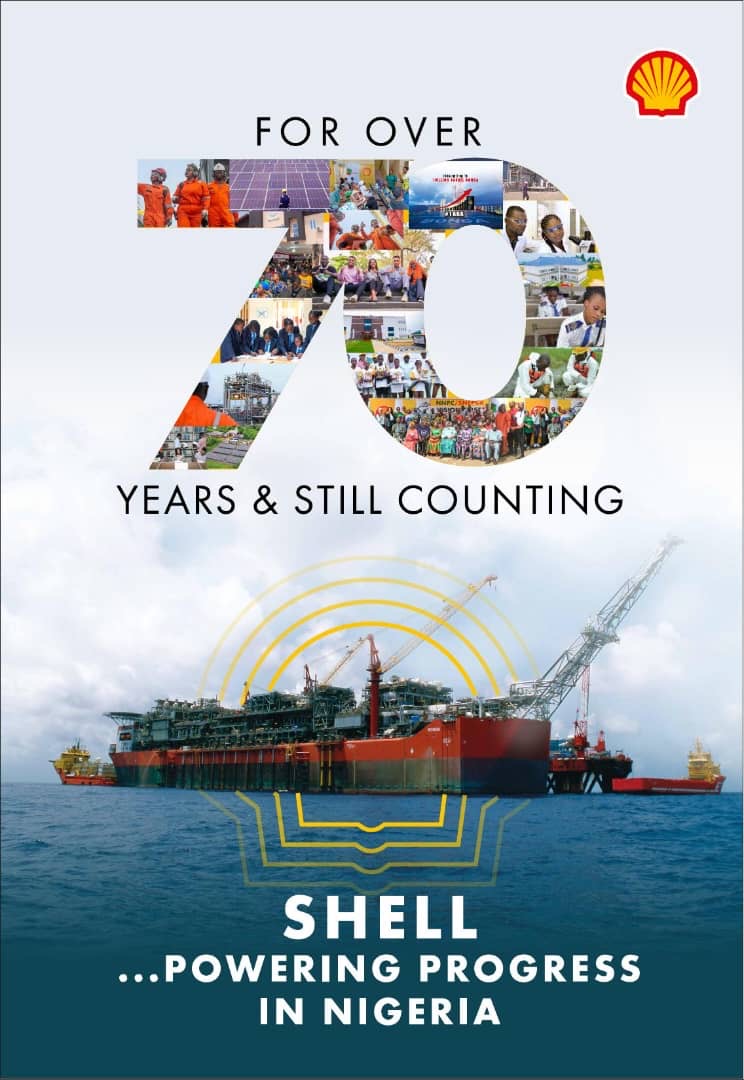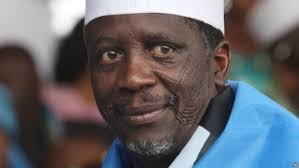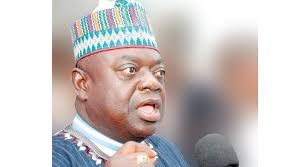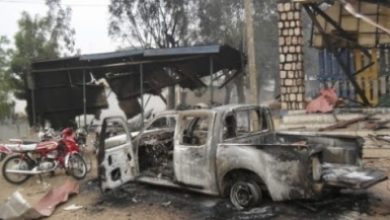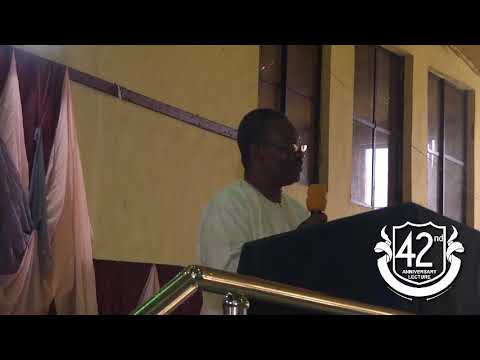
For the Record: CAPACITY BUILDING IN INFORMATION RESOURCE MANAGEMENT/PUBLIC RELATIONS AS A TOOL FOR EFFECTIVE ROAD TRAFFIC MANAGEMENT PAPER AT THE 4TH ANNUAL COMMANDER CONFERENCE OF OGUN STATE TRAFFIC COMPLIANCE AND ENFORCEMENT CORPS ON 29 NOV 2019

The organisation evolved a vision and mission for itself to illuminate its goals. The vision rests on three critical legs. The first is protection and enhancement of the safety of all road users. This it intends to do through organised public education, enlightenment programme, compliance and enforcement. The second is the desire to ensure road traffic flow in the state as a way of supporting the transformation quest of the government to attract investment. The third and last leg, is to achieve continuous rejuvenation of the Corps through sustainable capacity building so that its professional practices in modern road traffic management can be enhanced. To complement the vision achieved, TRACE sets four missions for itself. The first is to ensure âquality service delivery to all motoring public; the second, to see that it complements efforts of other traffic managers in the state; thirdly, âensures commensurable reduction in road traffic accidents/crashes so as to attain the United Nations Decade of Action for Road Safety (2011-2020),” while the fourth relates to injecting order and control into the road traffic system [of Ogun State] by making the users of the road to adopt best practices.â
As a way of building institutional integrity, the Corps adopted some principles as core values. They are to ensure: Professionalism, Discipline, Honesty, Loyalty, Team work, and Zero tolerance for extortion, bribery and corruption. What other higher ideals can compare with these espoused valuable values? In terms of history of ascendancy among traffic management agencies in Nigeria, TRACE also happens to rank highly. It is one of the early pioneer state traffic management agencies. Preceding it were only the federal agency, the Federal Road Safety Corps (FRSC) established in 1988, and the Lagos State Traffic Management Authority (LATSMA) that came into existence in 2000. After it had come into existence about a dozen other stateâs traffic management agencies.
TRACEâs existence is now nearly a decade-and-half years, from 20005 to 2019. As indicated, one of its significant tasks is reduction of road traffic accidents and crashes (reiterated in the third segment of its mission statement). Coincidentally, the mission statement aligns with the United Nations Decade of Action for Road Safety, which was to begin from 2011 and end in 2020. The decade was to achieve four major objectives. One, is that within the period, countries would have strengthened the institutional capacity of organisations required to advance road safety efforts. Development of data systems to monitor and evaluate activities would also have complemented this âPillar 1â of the decade. The second plank of the agenda or âPillar 2â is that work would have progressed in improving safety of road networks for all road users, including vulnerable users like pedestrians, bicyclists and motorcyclists. âPillar 3â focuses on promoting widespread use of crash avoidance technologies, while concluding âPillar 4â talks about the necessity to combine safety laws and standards, and creating awareness and education to increase the use of seat-belt and helmet wearing as well as reduction of drunk driving and speeding among others.
The date set for attainment of the United Nations Decade of Action for Road Safety is 2020 (barely a month away). Though a new global development agenda had since come into existence, succeeding the out-going one, the Sustainable Development Goals (SDG) with its 17 targets, with the new date 2030 to attain all promises, however, still conceded 2020 as the year for the world to achieve the ideals previously set under the Decade of Action for Road Safety. The global agency already knows that it is being overly optimistic unless magic happens in the next one month ahead. Wise counsel has therefore prevailed with the World Health Organisation (WHO) admitting that, âAt the current pace ⦠the target of halving road traffic deaths by 2020âone of the United Nationsâ Sustainable Development Goalsâwill not be met.â
The end of the United Nations Decade of Action for Road Safety definitely situates TRACE in two evaluative contexts. First is the opportunity to learn about its institutional growth and strength. Did it in any way move closer to attaining âPillar 1â of the Decade of Action for Road Safety that prescribe the building and strengthening of institution in the area of road safety as the foundation of attaining any meaningful goal in the area? The second perspective relates to the fact, within this period, are there prospects of TRACE as an organisation making attempts at meeting the key goal of the Decade which is to enhance the safety of all road users? It is obvious that the knowledge gained from answering these questions will be of tremendous benefit to TRACE. It will help in looking at what is to be done with regard to meeting the SDG goal on Road Safety that seeks to halve road traffic deaths among all road users: vehicle drivers, passengers, motorcyclists, cyclists and pedestrians.
In 2010 that the UN Decade of Action for Road Safety began, TRACE was marking its fifth birthday as an organization and state enterprise. Despite the teething period, it had quickly cut its milk teeth growing with a sure-footedness. The period witnessed the emergence of five Directorates and six units that included the Directorate of Traffic Operations. This Directorate has 26 Divisional Commands through which the operations of the agency is carried out. Other Directorates are those in charge of Planning Research and Statistics, Traffic Training and Public Education, Administration and Supply. There was also a Legal Advisory Unit and the office of the Corps Commander/Chief Executive being overall in charge. As at 2010, the total number of staff of TRACE was 596, while its actual budgetary expenditure (at August ending of that year) was N111,056,953.55. The ratio of officer to men in the organisation was 1: 3.4. Assumptions can be made that even if there were to be changes in its fortunes over the years, it couldnât be to a level that would cause a total or drastic disruption of the ability of the organisation to fulfil its basic mandate.
Ogun State in southwestern part of Nigeria was created in 1976. She shares borders with Lagos, the economic capital of Nigeria in the south, Oyo and Osun states to the north and Ondo in the east. The state is also a gateway to Nigeria because it is the land border with Nigeriaâs closest neighbour, the Republic of Benin in the west. By the Independent National Electoral Commissionâs data, there are the number of the residents of the state that registered for 2019 general elections are 2,375,003.
The state with 20 local governments and 37 local council development areas is highly urbanised with many cities and towns. However there are pockets of rural areas. Besides its being notable for high concentration of industrial estates, the state also has the highest number of universities â federal, state and private â in Nigeria besides other tertiary institutions. The conservative enrolment figures of each of these higher institutions are in tens of thousands. Examples are Bacbcock University, Ilishan, Remo, which is put 12,000 students; Olabisi Onabanjo University, Ago-Iwoye, 50,000; Tai Solarin University of Education, Ijebu-Ode, 8000; and Moshood Abiola Polytechnic, Abeokuta, put at 20,878. A higher percentage of the students and staff of these institutions live outside their campuses, they commute daily to and from their schools. Down to the other educational levels, apart from three federal secondary schools, the state has about 1,562 primary schools and 475 secondary schools excluding numerous private nursery/primary and secondary schools whose figures are not known. All of this constitutes daily traffic on the road.
Some of the busiest national and transnational highways in Nigeria pass through the state. The Lagos â Ibadan Expressway, the busiest highway in West Africa as well as the largest road network in Africa, passes through the state. From hinterland Nigeria, Ogun State also provides major access point to the Nigerian ports located in Lagos. Coupled with this is the fact that a predominant number of the major religious denominations in Nigeria have their worship/retreat centres along some of the major corridors of the state.
Of no less impact are the numerous open markets that are nearly normal economic live in virtually every village, town or city in the state. Besides education institutions whose spread are wide throughout the state, commercial trading and/or markets would seem to be the second other main pervasive socio-economic enterprise in the state. According to a joint study by Small and Medium Enterprises Development Agency (SMEDAN) and the National Bureau of Statistics (NBS) on Employment Generated in Micro-enterprises State by State in Nigeria, there are a total of 1,752,856 micro-enterprises operators in Ogun State with male accounting 1,004,908 or 57.3 per cent and female 747,949 or 42.6 per cent. The challenge of this massive concentration of traders and markets particularly to traffic management is apparent.
Earlier, two connected or related statements were made. The first was that TRACE as an organisation has evolved over time with an institutional structure and arrangement that can help it achieve its mandate. The second derives from the first. That within that context it is possible to assess how TRACE has met its own goal that conterminously aligns with the UN Decade of Action for Road Safety, especially as it concerns its primary function of enhancing the safety of all road users â motorists, motorcyclists, bicyclists and pedestrians.
According to an official publication that summarised the achievements of the Corps between 2011 and 2019, some of the notable accomplishments includes its response to emergency calls/rescue of crash victims that totalled 4,607 and rescuing of 21,398 people unhurt. Reported also was âDrastic reduction in road traffic crashesâ while there was apprehension of 18,800 traffic offenders. However, almost twice that figure of offenders were the number of people provided with counselling. The figure stood at 29,853. They were educated and enlightened about road safety and proper driving skills. By extension, 10,774 drivers were trained with right driving skill and appropriate road use behaviour. A lot of energy of the organisation was however expended on clearing obstructions as 57,608 accident vehicles constituting debris and other vehicles were towed by the agency during the period.
On the other hand, the new from the Federal Road Safety Corps (FRSC) was not charming. It was negative and sharply contrasting in terms of the figures of deaths and causalities resulting from road traffic crashes in the State. According to FRSC, within the ten-month period of January to October 2019, 301 persons lost their lives in 617 recorded auto crashes. To every two lives lost in an accident however, the organization succeeded in saving 172 lives. A total 1,723 accident victims were therefore able to rescued and taken to various hospitals during the period. Indeed, in comparison to the previous year during the same period, the statistics showed a 43 per cent increase in road crashes while the death rate rose by 23 per cent. The inference from the empirical data points to a simple fact: that a lot needs to be done to make the road safe for road users in Ogun state.
There is always a danger about statistics however owing to the fact that data are information that have potential for varied use. Data or statistics can be used accurately or be deployed to fraudulent ends. As message, they have the potential to be falsified, abused, misused or manipulated. In the hands of different people â politicians, propagandists, business executive, technocrats, analysts, and even social commentators â they can assume the status of a weapon or a tool. Care should therefore be taken when using statistics or data. From this perspective, the statistical information provided by TRACE highlighting the success of the organization has concerns they are raising in some areas. For instance, why the huge number of vehicles cleared and towed within the period? The 57,608 accident and vehicles towed and cleared indicates that every year 7,326 vehicles or 610 per month or 20 vehicles every passing day were being towed! Some vital questions would need answering to give clarity as to the real nature of the problem at hand and the solution to be found to it. An unavoidable question is, which parts or areas of the state are recording such a high number of culpable vehicles? Over what time is expected before a vehicle is towed? How is TRACE interpreting the problem and what strategic plan has it evolved to solve the problem? Increasing the burden of a road user suffering acute distress does not show efficiency of operations but institutional inhumanness. It can precipitate poor and negative perception of the organisation, dent its image, and hurt its goodwill among the members of the public.
It makes the conclusion wholesome therefore to look at how Ogun State people see the efforts of TRACE in saving their lives. What image of the Corps do they have? Is it positive or negative? How do they evaluate the organisation and its officers? In order words, what image of the organisation do they have? These are critical and cogent issues to the success of the work that the organisation is charged to do.Â
Image is about how the public perceive an organisation, its work, activities and performance. A good image infers that an organisation enjoys goodwill of the public while a bad or poor image can sometimes be a hindrance to attainment of corporate objectives. Five different kinds of image however exist. The first is corporate image, which is the overall image of the organization. Corporate image is total impression that people have of that organisation including its policy, activities, products, services and culture. Current or present image, the second one, is concerned with the knowledge and experience that the public have about that organisation. On the other hand, wish image, the third one, is how an organisation wishes to be seen by its different publics. This is contrary to mirror image that is how an organisation sees itself, which is the fourth, and multiple image, the fifth and last, which is the total image of an organisation as seen from the broad spectrum of the organisation.
Given that âimage is based on both word and deed – on verbal, visual, and behavioural messages, both planned and unplanned, that come from an organization and leave an impression,â it is possible to ascertain road users see the image of TRACE in Ogun State. The choice instrument of measurement or methodology is phenomenal study. Phenomenological study allows uncovering of âperceptions, perspectives, understandings, and feelings of those people who have actually experienced or lived the phenomenon or situation of interest.â Furthermore, it helps elimination of âbiases and preconceived assumptions about human experiences, feelings, and responses to a particular situation.â Conceptually and contextually, therefore, through phenomenology âdirect investigation and description of phenomena as consciously experienced by people living those experiences,â offers a good possibility. From this, there is opportunity of studying perspectives of multiple participants, and making generalizations therefrom from their live experience about the phenomenon. Very economical, the sample size in phenomenological study is often small, comprising 10 or less participants.
For two days â 20th and 21st â in the month of November 2019, a phenomenological study was carried out in Abeokuta, the capital of Ogun State. The objective of the study was to learn about the perception of TRACE from the road users. The questionnaire was a simple two open-ended questions. They were: (a) How do you see TRACE? and (b): Have you had any encounter with them? The use of the word âthemâ in the last question was deliberate so as to elicit from the respondents what their experience was like in coming against TRACE as a corporate organization and individual officers with whom they interact on the roads. Though phenomenological study is supposed to be based on in-depth study, the two questions were considered appropriate to allow for respondentsâ âperceptions, perspectives, understandings, and feelings.â   Â
The study applied to three groups â motorists, motorcyclists and pedestrians. The only group omitted were bicyclists. Bicycle is becoming a rare mode of transportation in the country, Ogun State not an exception. Excluding them is understandable therefore. From the motorist group, selection was further broken down into professional/economic/social categories. Among the motorists, the three professional categories chosen were journalists, teachers and bankers while commercial transport operators constituted the only group from the economic category. Journalists were chosen because of their important roles as watchdogs with the duties of providing information, education and enlightenment to the people. They therefore constituted an important plank in the successful prosecution of road safety campaign. With regard to bankers, the contrary is the case. Banking is a conservative business while its workers tend to be presumed apolitical and law abiding. On the other hand, teachers are considered important to road safety as they constitute vital link and channel in imparting road safety education and knowledge on the students. The three other groups making the list were commercial transport operators plying Lagos through Lagos â Ibadan Expressway, commercial motorcyclists and pedestrians, all in the socio-economic categories.   Â
From each of the category, ten respondents were selected. The selection and questionnaire administration on journalists was done at the Iwe Iroyin Press Centre where journalists usually gather after the dayâs work. The respondents were picked randomly. The only qualification was that the respondent must own and drive a car and the car must be in a serviceable condition. The bankers, in their case, were selected at one of the banks in Oke-Ilewo, the business district of the state capital. On the other hand, the teachersâ selection was done at a secondary school in Ita-Iyalode area of the state capital following an initial census that revealed that cars parked at the schoolâs parking lot numbered adequately the figure of respondents required. While the questionnaire on the journalists was administered by the author in the evening of November 20, 2019, those of the bankers and teachers were done the following day on November 21, 2019.
For the three remaining socio-economic categories, the author employed the services of two university graduates who were also speakers of the indigenous language Yoruba. The two assistants spent the day of November 22, 2019, administering the questionnaire. One undertook survey of the two commercial transport operators listed the study. While the survey of motor transport operators took place in Kuto Garage, the major terminus for passengers to and from Lagos using the Lagos â Ibadan Expressway, that of the commercial motorcyclists was done at Oke-Ilewo, at a spot where a number of the motorcyclists usually congregate. Concerning pedestrians, the survey was done at Panseke, which serves as a major transport hub for the students of Moshood Abiola Polytechnic (MAPOLY). The study specifically targeted the students as the pedestriansâ category. MAPOLY is non-residential and its students commute daily to school, which becomes of importance in gauging how much connected is TRACE to pedestrians, who are also the future generation, the future leaders and the future workers. In total therefore, 60 respondents took part in the study. They respondents covered all the available categories of road users in Ogun State â motorists, motorcyclists and pedestrians.
The 60 respondents presented a balance figure of 10 each on every side of the targeted groups. The sampling size conformed to requirements of the phenomenological study. What are the results obtained? Phenomenological study is a qualitative study that lends its data to analysis which includes opportunities of identifying themes derived from individual assessments that ultimately helps in making generalizations. The response from each individual respondent was consequently studied, categorized as whether positive, negative, or neither, and then followed by identifying themes that suggest how the groups see TRACE in their collectivity.
Table 1. Overall evaluation of image of TRACE and road usersâ encounter in Abeokuta
S/NÂ Â Â Â Â Â Â
Category             Sex        E v a l u a t i o n Encounter
                               M           F             NI          POSITIVE            NEGATIVE          NEITHER              Y             N
- Journalists 10Â Â Â Â Â Â Â Â Â Â -Â Â Â Â Â Â Â Â Â Â Â Â Â -Â Â Â Â Â Â Â Â Â Â Â Â Â 8Â Â Â Â Â Â Â Â Â Â Â Â Â 2Â Â Â Â Â Â Â Â Â Â Â Â Â -Â Â Â Â Â Â Â Â Â Â Â Â Â 7Â Â Â Â Â Â Â Â Â Â Â Â Â 3
- Bankers 4Â Â Â Â Â Â Â Â Â Â Â Â Â 5Â Â Â Â Â Â Â Â Â Â Â Â Â 1Â Â Â Â Â Â Â Â Â Â Â Â Â 8Â Â Â Â Â Â Â Â Â Â Â Â Â 2Â Â Â Â Â Â Â Â Â Â Â Â Â -Â Â Â Â Â Â Â Â Â Â Â Â Â 5Â Â Â Â Â Â Â Â Â Â Â Â Â 5
- Teachers 3Â Â Â Â Â Â Â Â Â Â Â Â Â 7Â Â Â Â Â Â Â Â Â Â Â Â Â -Â Â Â Â Â Â Â Â Â Â Â Â Â 8Â Â Â Â Â Â Â Â Â Â Â Â Â 2Â Â Â Â Â Â Â Â Â Â Â Â Â -Â Â Â Â Â Â Â Â Â Â Â Â Â 4Â Â Â Â Â Â Â Â Â Â Â Â Â 6
- Com Trans O 10Â Â Â Â Â Â Â Â Â Â -Â Â Â Â Â Â Â Â Â Â Â Â Â -Â Â Â Â Â Â Â Â Â Â Â Â Â 7Â Â Â Â Â Â Â Â Â Â Â Â Â 3Â Â Â Â Â Â Â Â Â Â Â Â Â -Â Â Â Â Â Â Â Â Â Â Â Â Â 3Â Â Â Â Â Â Â Â Â Â Â Â Â 7
- Com Mtrcylst 10Â Â Â Â Â Â Â Â Â Â -Â Â Â Â Â Â Â Â Â Â Â Â Â -Â Â Â Â Â Â Â Â Â Â Â Â Â 7Â Â Â Â Â Â Â Â Â Â Â Â Â 3Â Â Â Â Â Â Â Â Â Â Â Â Â -Â Â Â Â Â Â Â Â Â Â Â Â Â 6Â Â Â Â Â Â Â Â Â Â Â Â Â 4
- Pedestrians 5Â Â Â Â Â Â Â Â Â Â Â Â Â 5Â Â Â Â Â Â Â Â Â Â Â Â Â -Â Â Â Â Â Â Â Â Â Â Â Â Â 9Â Â Â Â Â Â Â Â Â Â Â Â Â -Â Â Â Â Â Â Â Â Â Â Â Â Â 1Â Â Â Â Â Â Â Â Â Â Â Â Â 2Â Â Â Â Â Â Â Â Â Â Â Â Â 8
Total     42          17          1             47          12          1             27          33
%Â Â Â Â Â Â Â Â Â Â Â 70Â Â Â Â Â Â Â Â Â Â 28Â Â Â Â Â Â Â Â Â Â 1.6Â Â Â Â Â Â Â Â Â 78Â Â Â Â Â Â Â Â Â Â 20Â Â Â Â Â Â Â Â Â Â 1.6Â Â Â Â Â Â Â Â Â 45Â Â Â Â Â Â Â Â Â Â 55
Key: Com Trans O = Commercial Transport Operator, Com Mtrcylst = Commercial Motorcyclist, M = Male, F = Female, NI = Not indicated, Y = Yes, and N = No
Source: Gbenga Gbesan, 2019
From the table, it shows that men constitutes the highest number of the respondents with 42 or 70% while the female accounts for only 17 or 28%. One respondent forgot to indicate his or her gender. A large number of the respondents 47 (78%) see TRACE positively while those with negative perception were few, a mere dozen (12) or just 20% of the respondents. One respondent (1.6%) was neither positive nor negative, failed to give any indicative or suggestive word that could help understanding of the side he was on.
The table further indicates that the largest group with the positive rating of TRACE are the pedestrians. Incidentally, these were students but ironically, the group too had the lion share of those with âNoâ encounter with the Corps. The students constituted 19% or 9 in figure out of the 47 respondents who gave TRACE positive rating while at the same time 8 or 24% claimed not to have had any encounter with the Corps. The manifested contradiction suggests a dilemma on the part of the students. A lot of them had textbook knowledge of TRACE. For example, among the ways they described TRACE were: ââ¦people who save guard life and properties on Highways and ensure smooth road network within the state (sic);â âTrace are government officials who control traffic and ensures (sic) drivers conform to the Traffic laws (sic);â and another bland one that says âI see them as government official and they save traffic (sic).â
But in terms of practical experiencing of the work of the  organisation it didnât seem to be so on their part against the empirical observation of the poor and risky road safety behaviour om the part of the students. Take for example basic knowledge and training that it is not right to back traffic, or cross roads at wrong points, or use phones while walking, which you see a lot of these students engaging in, a little dispute is required in averring that even at that level, their training or knowledge of road safety and risky behaviours is low. Extend many of these rampant risky road safety behaviours to other lower levels of education â especially the primary and secondary schools â whose students are in their several thousands, the big challenge of imparting appropriate safe road behaviour on the pedestrian road users will be apparent. Add similar problem of other risky road safety behaviours from the millions of illiterate traders in the informal sector it will become obvious that TRACE has a long way to go in meeting the goals of Sustainable Development Goals (SDGs).
Such apparent challenges notwithstanding, TRACE beauty shines in the eyes of the organisationâs beholders. The praise comes with effusive commendations. Table 2 highlights this point.Â
Table 2. Public Image Rating of Trace based on terms like âdoing a good job,â fantastic job,â âcreditably wellâ¦.â Â
S/N       Category             No Respondents             No Rating           %           Sex
                                                                               M           F             NI
- Journalists 10Â Â Â Â Â Â Â Â Â Â 5Â Â Â Â Â Â Â Â Â Â Â Â Â 50Â Â Â Â Â Â Â Â Â Â 5Â Â Â Â Â Â Â Â Â Â Â Â Â -Â Â Â Â Â Â Â Â Â Â Â Â Â –
- Bankers 10Â Â Â Â Â Â Â Â Â Â 4Â Â Â Â Â Â Â Â Â Â Â Â Â 40Â Â Â Â Â Â Â Â Â Â 1Â Â Â Â Â Â Â Â Â Â Â Â Â 2Â Â Â Â Â Â Â Â Â Â Â Â Â 1
- Teachers 10Â Â Â Â Â Â Â Â Â Â 6Â Â Â Â Â Â Â Â Â Â Â Â Â 60Â Â Â Â Â Â Â Â Â Â 1Â Â Â Â Â Â Â Â Â Â Â Â Â 5Â Â Â Â Â Â Â Â Â Â Â Â Â –
- Com. Trans Operator 10Â Â Â Â Â Â Â Â Â Â 7Â Â Â Â Â Â Â Â Â Â Â Â Â 70Â Â Â Â Â Â Â Â Â Â 7Â Â Â Â Â Â Â Â Â Â Â Â Â -Â Â Â Â Â Â Â Â Â Â Â Â Â –
- Com. Motorcyclists 10Â Â Â Â Â Â Â Â Â Â 7Â Â Â Â Â Â Â Â Â Â Â Â Â 70Â Â Â Â Â Â Â Â Â Â 7Â Â Â Â Â Â Â Â Â Â Â Â Â -Â Â Â Â Â Â Â Â Â Â Â Â Â –
- Pedestrians 10Â Â Â Â Â Â Â Â Â Â 0Â Â Â Â Â Â Â Â Â Â Â Â Â 0Â Â Â Â Â Â Â Â Â Â Â Â Â 0Â Â Â Â Â Â Â Â Â Â Â Â Â 0Â Â Â Â Â Â Â Â Â Â Â Â Â 0
Total     60          29          48.3       21          7             1
%Â Â Â Â Â Â Â Â Â Â Â 72.4Â Â Â Â Â Â Â 24.1%Â Â Â 3.4%
Source: Gbenga Gbesan, 2019
It is ironic again where the highest of praise TRACE is coming from! It is from the two groups often perceived as notorious road users â commercial transport operators and their twin brothers â the commercial motorcyclists. The two are often seen as lacking in respect for traffic laws and road courtesy. It is almost a shared refrain between them that, âThey (meaning TRACE) are doing a good job.â After them in superlative words for the agency were the teachers. More than half of the teachers not only feel satisfied with the performance of TRACE, they gave it good grades with remarks like âtrying their best…,â âreally workingâ¦â doing their job diligentlyâ¦â to qualify their evaluation. On the part of journalists, though only half of them had positive perception of TRACE, their ratings had exceptional touch to them as they included expression of sympathy to the Corps Views like âPreforming creditably well in spite of shortage of manpower;â trying their best but government did not provide them with needed equipment;â âvery dedicated institution;â âvery hardworking and helpful;â âimproving;â and âdoing wellâ show how positive is the image of TRACE in the eyes of those who are supposed to be its watchdog.
Nevertheless, positive and encouraging as these evaluations are, some come with reservations as shown in Table 3 below.
Table 3. No of those viewed TRACE image positively but still expressed strong reservations
S/N       Category             No Positive Rating          No of Reservation          %           Sex
                                                                               M           F             NI
- Journalists 5Â Â Â Â Â Â Â Â Â Â Â Â Â 3Â Â Â Â Â Â Â Â Â Â Â Â Â 60Â Â Â Â Â Â Â Â Â Â 3Â Â Â Â Â Â Â Â Â Â Â Â Â -Â Â Â Â Â Â Â Â Â Â Â Â Â –
- Bankers 4Â Â Â Â Â Â Â Â Â Â Â Â Â 4Â Â Â Â Â Â Â Â Â Â Â Â Â 100Â Â Â Â Â Â Â Â 2Â Â Â Â Â Â Â Â Â Â Â Â Â 2Â Â Â Â Â Â Â Â Â Â Â Â Â –
- Teachers 6Â Â Â Â Â Â Â Â Â Â Â Â Â 2Â Â Â Â Â Â Â Â Â Â Â Â Â 33Â Â Â Â Â Â Â Â Â Â 1Â Â Â Â Â Â Â Â Â Â Â Â Â 1Â Â Â Â Â Â Â Â Â Â Â Â Â –
- Com Transport Operators 7Â Â Â Â Â Â Â Â Â Â Â Â Â 3Â Â Â Â Â Â Â Â Â Â Â Â Â 33Â Â Â Â Â Â Â Â Â Â 3Â Â Â Â Â Â Â Â Â Â Â Â Â -Â Â Â Â Â Â Â Â Â Â Â Â Â –
- Com Motorcyclists 7Â Â Â Â Â Â Â Â Â Â Â Â Â 2Â Â Â Â Â Â Â Â Â Â Â Â Â 29Â Â Â Â Â Â Â Â Â Â 2Â Â Â Â Â Â Â Â Â Â Â Â Â -Â Â Â Â Â Â Â Â Â Â Â Â Â –
- Pedestrians 0Â Â Â Â Â Â Â Â Â Â Â Â Â 0Â Â Â Â Â Â Â Â Â Â Â Â Â 0Â Â Â Â Â Â Â Â Â Â Â Â Â 0Â Â Â Â Â Â Â Â Â Â Â Â Â 0Â Â Â Â Â Â Â Â Â Â Â Â Â 0
Total     29          14          48.2       11          3             –
               %           79          21          –
Source: Gbenga Gbesan, 2019
Contrary to expectation, bankers expressed the highest number of reservations. It is as if they had the eagerness to approbate and reprobate at the same time, or take away with left hand what they had generously given with the right. Four bankers rated TRACE positively. And that same number of FOUR âBUTâ about the organisation. The âbutsâ are as follows: â⦠there are some bad eggs among them;â âmost of them lack traffic trainingâ¦;â âHelpful but overzealous;â and the fact that âsome are well behaved and some otherwise.â The journalists were no less acerbic, accusing that there âwere few ones who may likely want to extortâ¦;â that there are âbag eggs that need to be weeded;â and that the institution is âlacking in effective public relationsâ in addition. The implication of this double-edged, conflicting image is that TRACE needs to design strategic plans to win the respect of the public. Enforcement of law and demonstrating empathy, showing understanding and responsiveness needs not be mutually exclusive. The two can go together. It is what TRACE needs especially in the face of its strongest critics who, as the table that follows shows, though may be negligible statistically, but makes obvious some of the weak points of the organisation.
Table 4. No of views expressing strong condemnations of TRACE
S/N       Category             No Respondents             No Rating Received        %           Sex        Encounter
                                                                               M           F          Â


